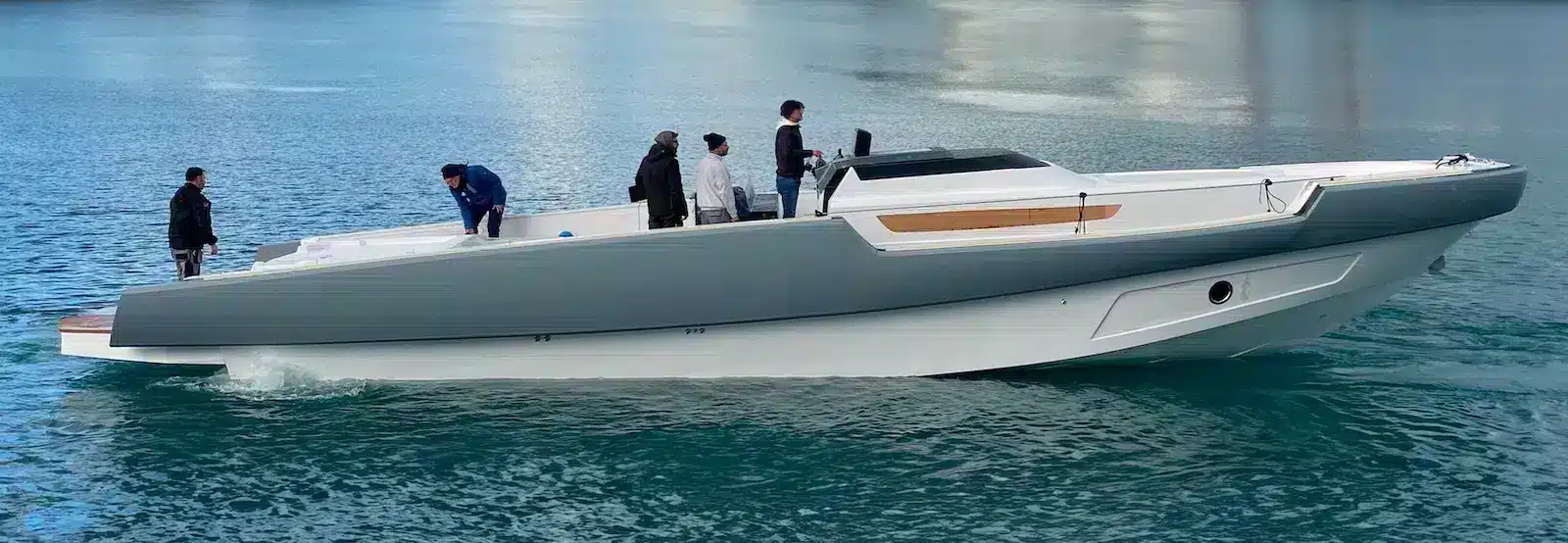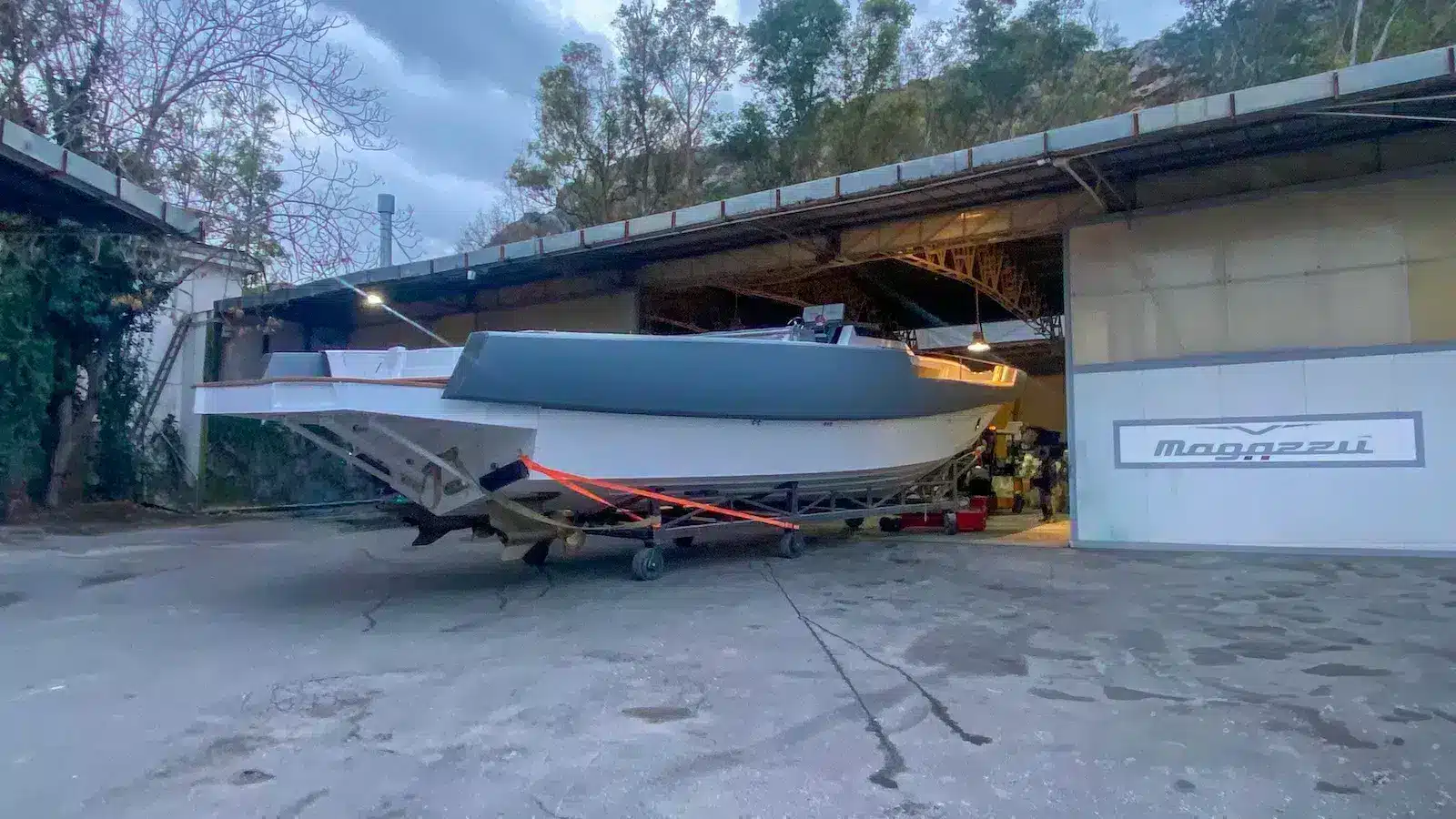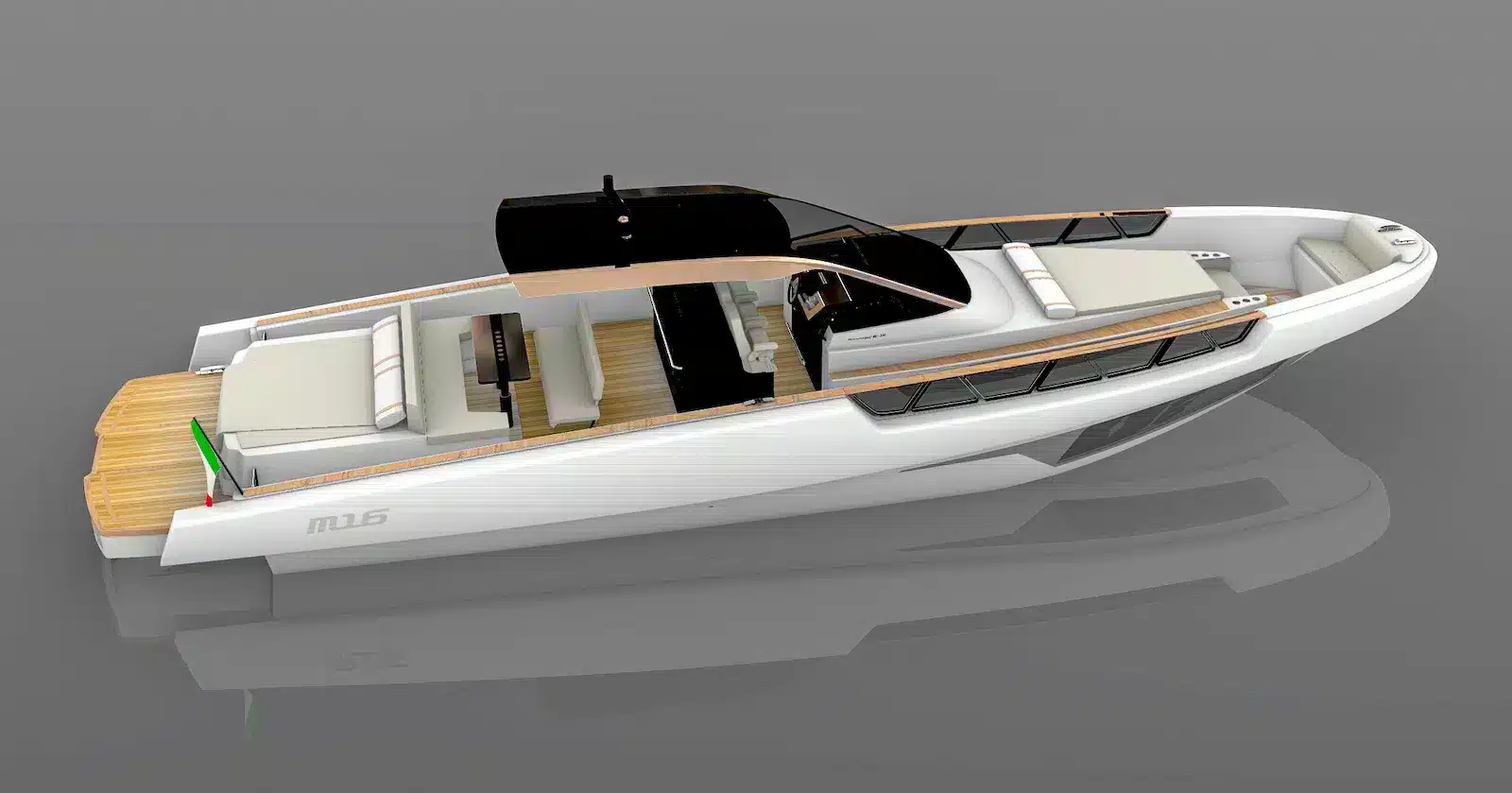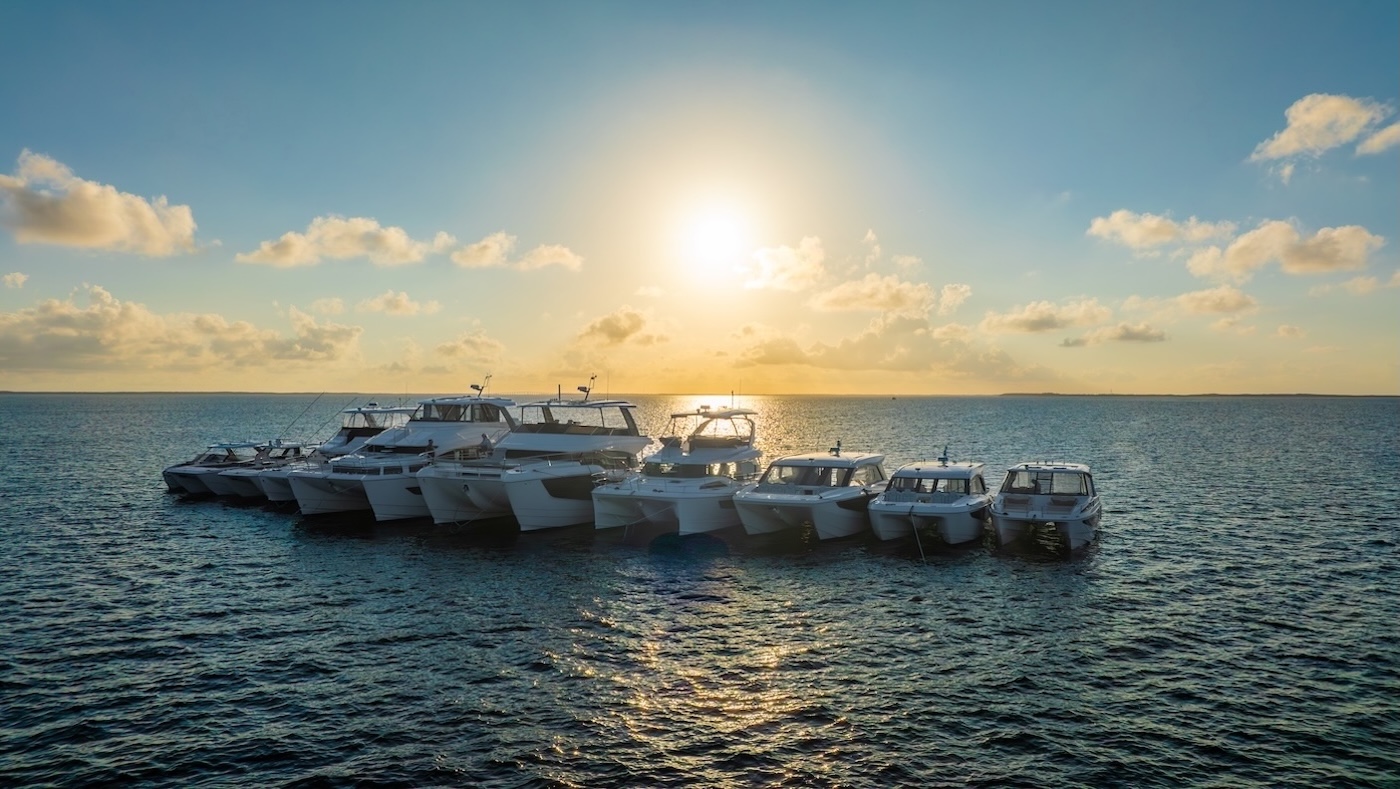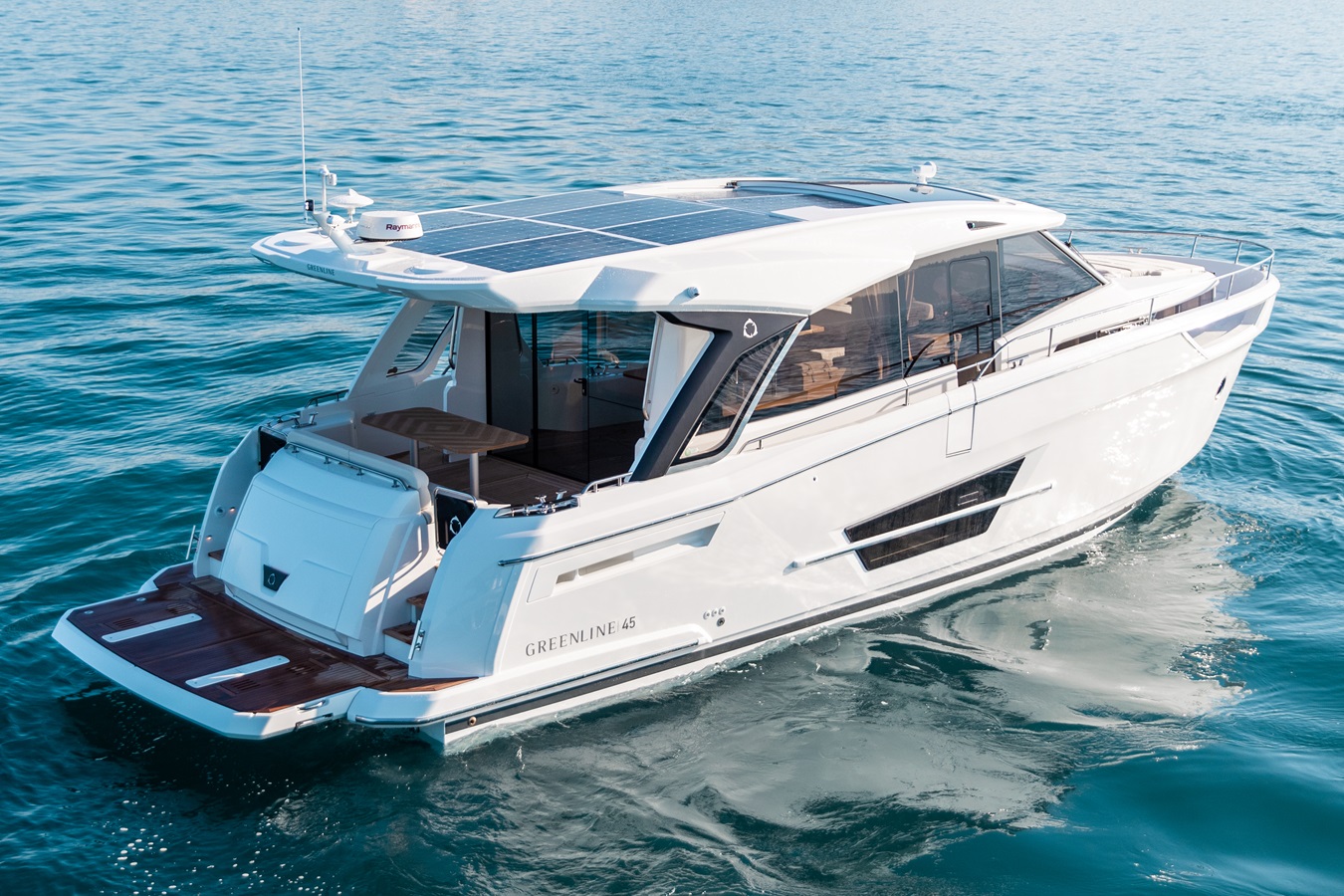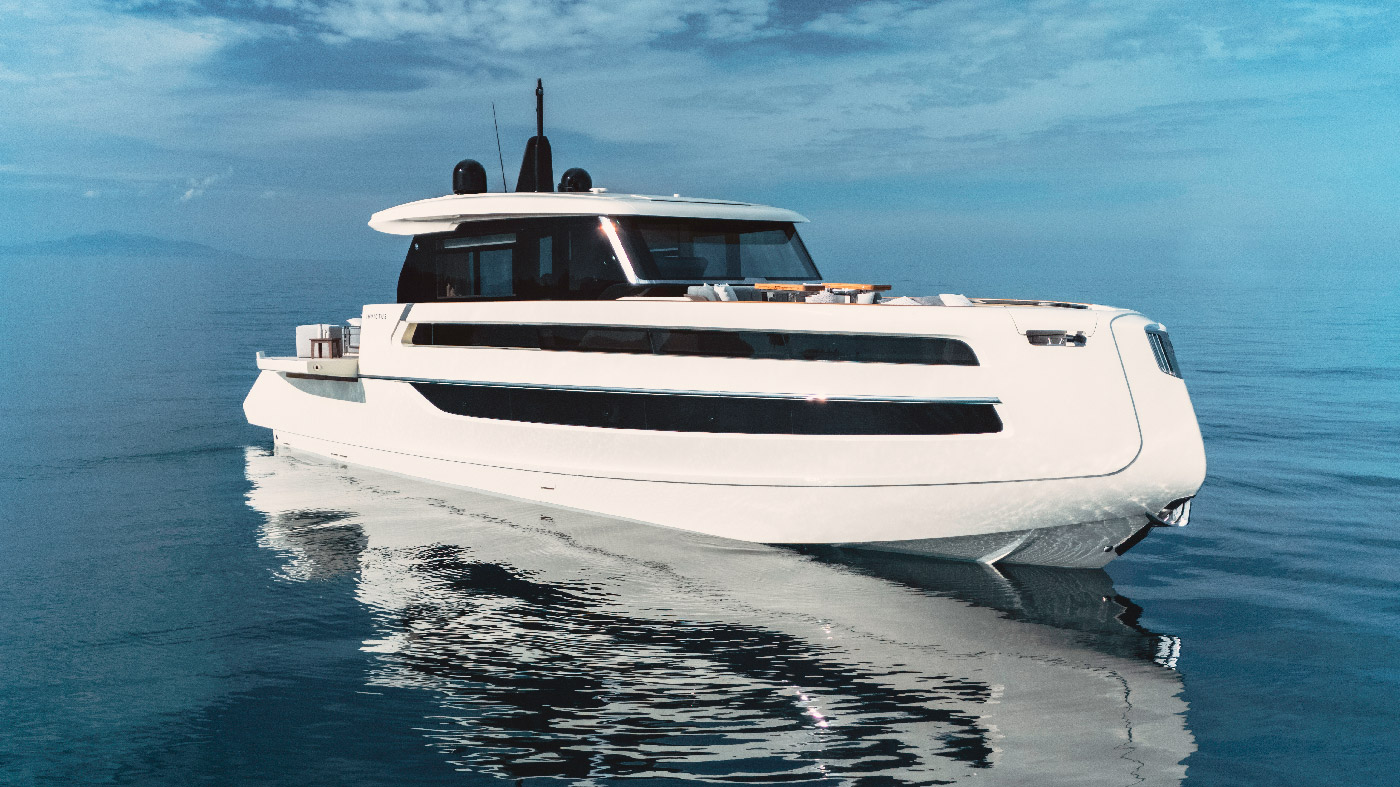The technical launching of the brand-new Magazzù M16 took place a few days ago. As is always the case for boats of such a level, this is a very important operation that allows for a whole series of checks, preliminary to the construction completion.
In fact, the hull no.1 of Magazzù M16 was “passed to the loupe” during a long day of testing, which revealed performance that definitely exceeded design expectations, both in terms of sea behavior and speed, as the new maxi-rib powered by Volvo Penta IPS 800 reached and exceeded 40 knots.
The performance of the new model, which exhibited perfect longitudinal trim, a valuable endowment for cruising comfort, was also noteworthy. The trials took place in Palermo where the sea weather conditions allowed the Magazzù M16 to be tested even in rough seas.
Just outside the gulf, the mistral triggered a swell that in some places reached two meters in height, a perfect condition to take the maxi-rib to the limit, which, unconcerned by the situation, nevertheless proved it could sail with ease, even in these conditions. A predictable result, given that the naval engineering of this project was taken care of by Prof. Alfredo Magazzù, founder of the shipyard, and his son Renato, a team that has by now accustomed us to these out-of-the-ordinary results.
At the end of this two-day test, the Maxi-Rib was returned to the shipyard where it will continue its construction path toward the official launch, scheduled for next April.
Construction will in fact continue with the assembly of the Hard Top, the systems, the still missing electronics, the seating and all the on-board upholstery. Once this step is finished, the Magazzù M16 will finally get the important and long finishing phase, which, for a product like this, is absolutely imperative.
The design of the new Magazzù M16
As usual, the design of this mega Maxi-Rib stems from the genius of Claudio Magazzù, succeeding brilliantly in appearing lightweight and intriguing despite its enormous size. The new Magazzù M16 introduces many innovations to the current range, such as the layout of the deck spaces and the glazed notches in the bulwarks that, clearly designed to provide light below deck, contribute to further lighten the design of the side section.
Equally enormous is the Hard-Top that accommodates no less than four forward-facing armchairs reaching up to cover the galley area. From here, through an electric awning, the shaded area can be further extended to fully cover the outdoor dinette.
The bow accommodates a second sundeck that delimits a second lounge area, which can also be shaded through the use of tarps and carbon poles, featuring two more opposing sofas.
The interior will house a living area and two cabins each equipped with en-suite bathroom. The renderings of these areas are still kept under wraps, however.

